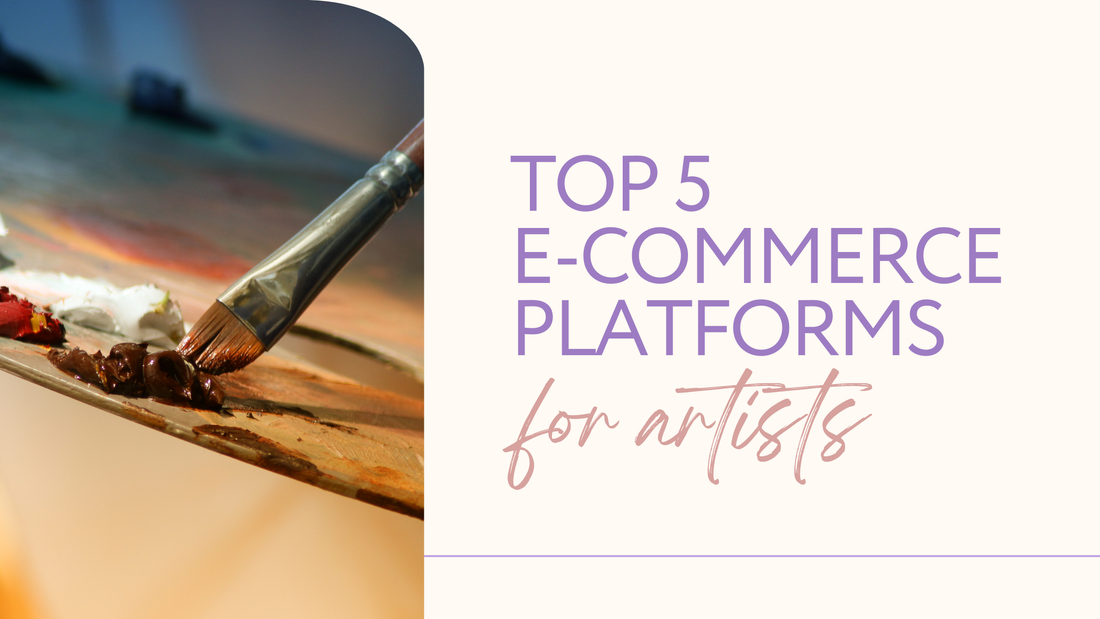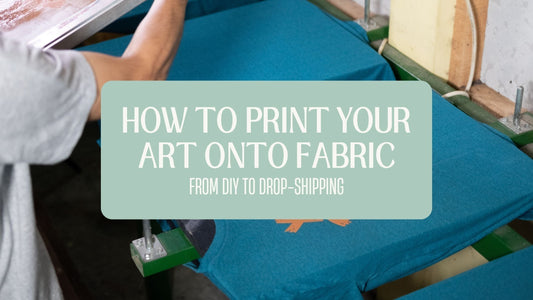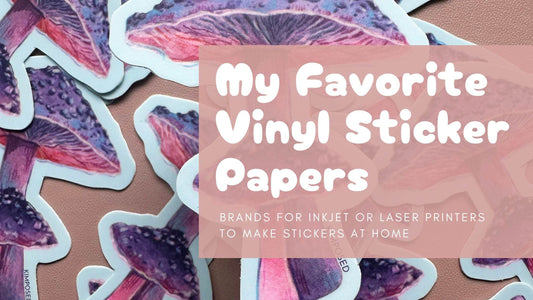Whether you're a painter, illustrator, crafter, or surface designer, selling your art online is one of the best ways to reach a global audience and build a thriving creative business. But choosing the right e-commerce platform for artists can make all the difference between frustration and flourishing.
From full-featured stores to marketplaces with built-in buyers, here are the top five e-commerce platforms for artists in 2025, complete with pros, cons, pricing, and insights into their analytics and tools.

Shopify – Best Overall E-Commerce Platform for Artists
After tons of research, I ended up landing on setting up my site (yes, the one you're on right now!) on Shopify. Why? I thought it had the biggest bang for my buck - tons of tools for marketing, transparent analytics and reporting (I'm a data nerd after all), easy-to-use templates, and the ability to connect to so many other sales channels.
Ideal for: Artists and designers who want full control and room to grow.
Why It Stands Out: Shopify is the leading e-commerce platform for small businesses—including thousands of artists and creatives. Its flexibility, design options, and robust third-party integrations make it the best long-term home for your creative brand.
Pros:
- Beautiful, customizable storefronts
- Built-in tools for inventory, shipping, and tax
- Ability to sell across multiple channels seamlessly (Instagram, Pinterest, Etsy, etc.)
- Great for scaling as your brand grows
- Built-in marketing tools for email, SEO, discounting, and more
- Access to thousands of third-party apps to help improve your sales, designs, analytics - you name it!
- Fair processing fees, especially when using Shopify Payments
- Shipping discounts on shipping labels
Cons:
- Limited design flexibility without code knowledge
- Many third party apps are not free, which ends up increasing your total monthly costs
- Learning curve for beginners
Pricing: Starts at $39/month

Etsy – Best Marketplace for Handmade and Vintage Art
Etsy is not a bad place to start if you're just beginning to figure out how to sell your artwork. It's actually where I got my start, too. When I was first starting out back in 2015/2016, I didn't have a massive social media following to direct people to my artwork, so I had to make sure I placed my art for sale in a place that was discoverable for a large network of people. Etsy filled this need for me, but is a great option for you, if you're in a similar place in your art journey.
Ideal for: Beginners in e-commerce, or if you're just starting out and don't have a large audience yet.
Why It Stands Out: Etsy is the go-to marketplace for handmade products and vintage goods. Great for new sellers looking for fast visibility.
- Built-in audience and internal SEO
- Print-on-demand integration
- Analytics: Shop stats, traffic, views, orders
- Marketing: Coupons, Etsy Ads, sales tools
Pros:
- Huge customer base looking for unique items (though it's there has been a notable drop in Etsy organic traffic according to some shop owners and forums)
- Simple listing and selling process
- No upfront monthly subscription fees
- Shipping discounts on shipping labels
Cons:
- High competition - the marketplace has definitely become oversaturated over the years, and it's becoming more difficult to stand out
- High transaction and listing fees can add up
- Less control over branding and customer experience
Pricing: $0.20/listing + 6.5% transaction fees + any off-site marketing fees if Etsy sells your products using off-site ads

Big Cartel – Best Budget-Friendly Option for Indie Artists
Although I've never used Big Cartel myself, I've heard great things from other independent artist friends. Big Cartel is designed with indie creators in mind: It’s easy to set up, lightweight, and budget-friendly—especially for smaller shops. While it lacks some of the advanced features of Shopify, it’s perfect for artists who just want to start selling with minimal hassle.
Ideal for: Small shops, zine makers, indie artists with fewer SKUs.
Why It Stands Out: Simple, lightweight platform built for creators. No transaction fees and a free plan available.
- Minimalist storefronts, easy setup
- Google Analytics integration
- Analytics: Sales dashboard, product views
- Marketing: Discount codes, social integrations
Pros:
- Free plan for up to 5 products
- Super simple setup and interface
- No transaction fees
Cons:
- Limited design customization
- Fewer integrations and features than larger platforms
Pricing: Free for 5 items, paid plans start at $9.99/month

Squarespace – Best Portfolio + Store Combo
Surprise, surprise: I also have a separate portfolio site, kimchyan.com, for my surface design and consulting work! For this site, it was important for me to be able to showcase my work without constraints and limitations on page design, which made Squarespace an obvious choice. Its e-commerce tools are definitely more limited than Shopify, so this is probably the best choice if you're just looking to showcase a portfolio, gallery, or works page.
Ideal for: Portfolio websites, for example for fine artists, illustrators, and photographers.
Why It Stands Out: Beautiful templates and intuitive design make this a perfect hybrid of portfolio and store.
- Drag-and-drop page builder
- Supports digital and physical products
- Analytics: Visitor behavior, traffic, conversions
- Marketing: Email campaigns, SEO, member areas
Pros:
- Gorgeous templates that showcase visuals
- Easy drag-and-drop builder
- All-in-one platform (hosting, domains, etc.)
Cons:
- Slightly less robust e-commerce features
- Limited payment gateway options
Pricing: Starts at $23/month

WooCommerce – Best for Tech-Savvy Artists on WordPress
I'm going to age myself here. Back when I first got started with building website for my marketing clients in 2012, 99% of those websites were built on Wordpress. It's highly customizable, and usually came free with any domain + hosting package that you'd likely find from those big providers (GoDaddy, Namecheap, Bluehost, etc.).
When using Wordpress, it's easier to just plug in an extra tool to add e-commerce functionality, than to have to start over to build an entirely new website on a fresh platform, which is where WooCommerce comes in. This is probably the only scenario that I would recommend WooCommerce, as it's often a much clunkier user experience than some of the other options listed in this article.
Ideal for: Artists who have an existing WordPress website, or have tons of technical experience.
Why It Stands Out: Fully customizable plugin with advanced e-commerce features and SEO tools.
- Sell any type of product
- Endless plugin options and themes
- Analytics: Product reports, customer data, Google Analytics integration
- Marketing: Add-ons for SEO, CRM, and social
Pros:
- Fully customizable with plugins and themes
- No platform fees
- Great for SEO and content marketing
Cons:
- Requires web hosting and setup
- Steepest learning curve
- Maintenance and updates are your responsibility, which becomes cumbersome over time
Pricing: Free plugin, but hosting and plugins add cost (~$10–30/month)
Final Thoughts
There’s no one-size-fits-all when it comes to selling your art online. Your platform should fit your goals, style, and stage of business. From scalable storefronts like Shopify to community-driven platforms like Etsy, each offers unique value. Choose the one that lets your creativity shine—and your business grow.



 https://kimposed.com/pages/about
https://kimposed.com/pages/about


